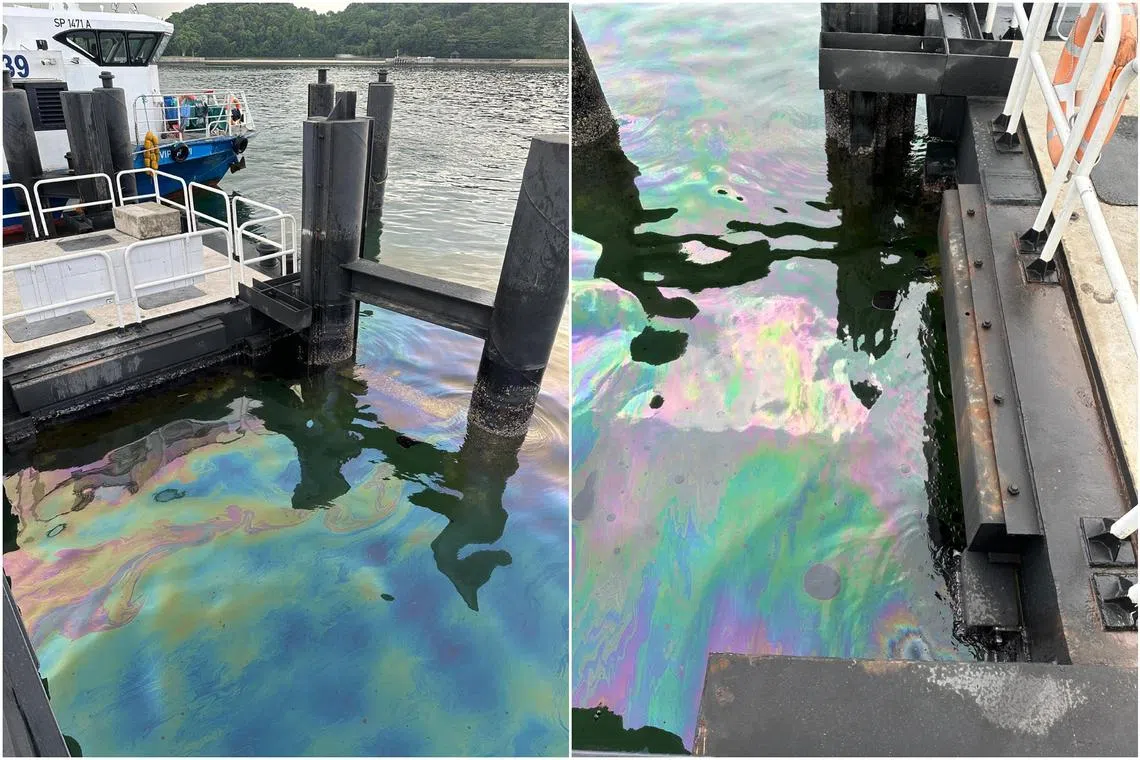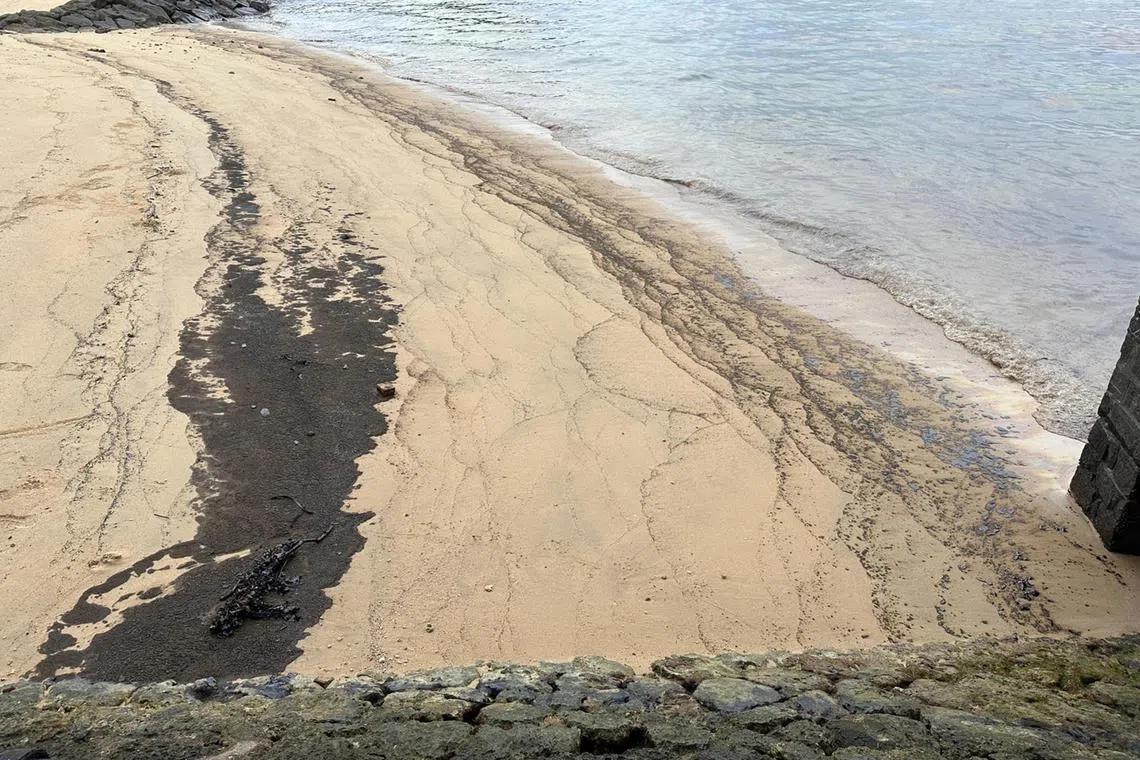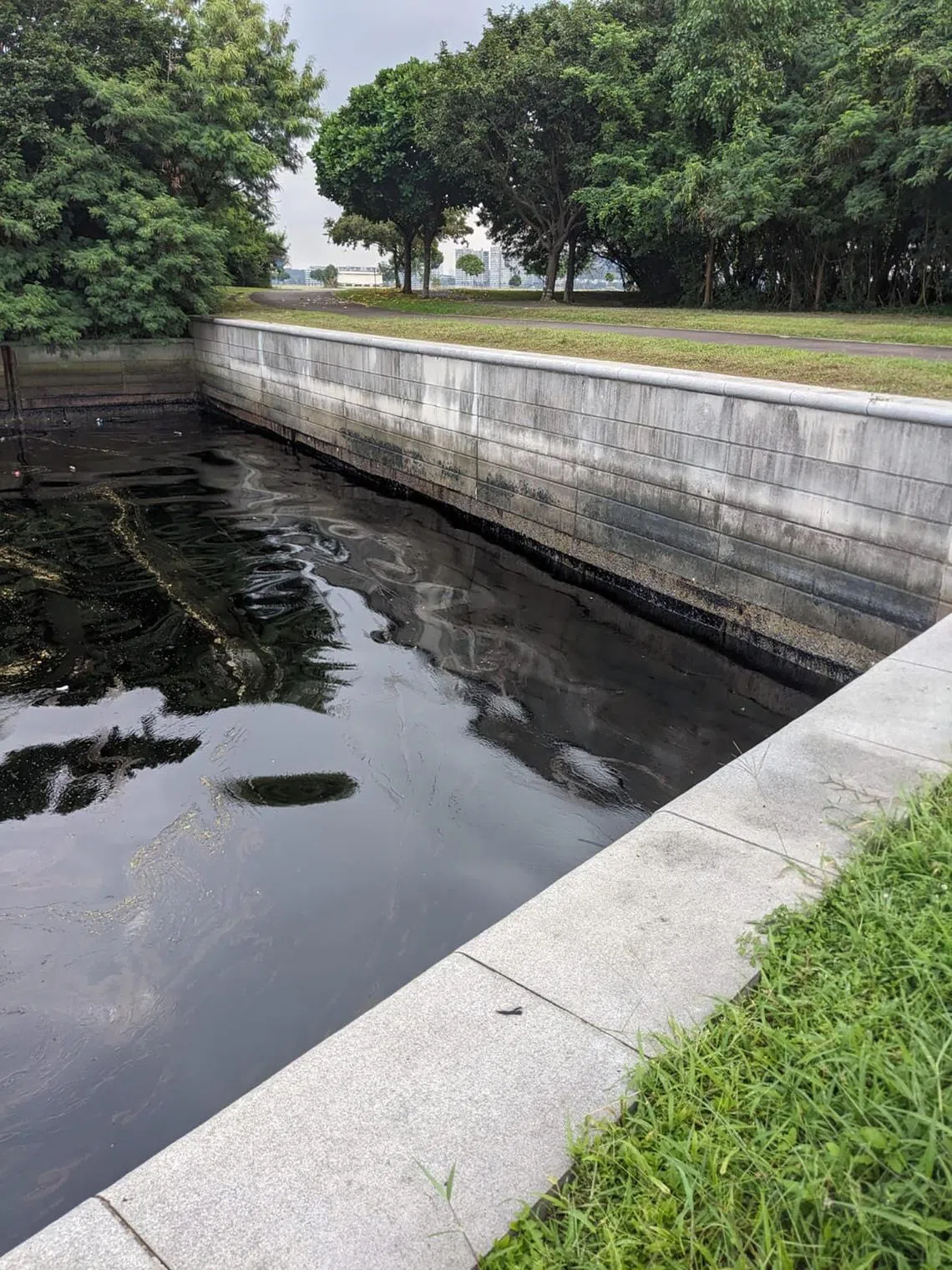Oil spill reaches S’pore’s southern islands, sparking concerns over corals weakened from bleaching
Sign up now: Get ST's newsletters delivered to your inbox
Follow topic:
SINGAPORE - Oil leaking from a damaged cargo tank at Pasir Panjang Terminal
The fishing and yachting communities are on alert for fish deaths over the next few days, while marine biologists fear how Singapore’s corals will fare amid the spill.
This is especially since the Republic’s coral reefs are still in a weakened state due to the ongoing bleaching event
Mr Ahmed Aliyar, an administrative manager at St John’s Island National Marine Laboratory (SJINML), told The Straits Times that he saw oil clinging to the mangroves next to the island’s main jetty at about 8.45am on June 15.
“I was on the ferry heading to St John’s from Marina South Pier this morning. The sea was covered with oil and trash, and there was a strong crude oil smell in the air,” he added.
Later, as he made his rounds around the island, he also saw an oily sheen covering the lagoons and coastal areas around St John’s and the adjacent Lazarus Island.
The spill was caused by a collision between the Netherlands-flagged dredging boat Vox Maxima and the Singapore-flagged bunker vessel Marine Honour, which was stationary, at about 2.20pm on June 14.
The damaged cargo tank on Marine Honour – which was next to a container vessel berthed at Pasir Panjang Terminal – leaked oil into the sea.
The spill comes about a month after Singapore announced plans to designate its second marine park
Parts of the first park – the Sisters’ Islands Marine Park – were also affected by the spill, with rocky shores at St John’s Island’s western end reportedly coated in oil.
Dr Jani Tanzil, a coral reef scientist and facility director of the SJINML, said that when staff left the island at about 5pm on June 14, the oil had not yet reached the island.
Dr Tanzil said the Friends of Marine Park community – including marine scientists, boaters and ocean-dependent business owners – plans to survey the shores around St John’s and Lazarus islands on June 16 to document the oil slicks and impact on marine life.

The oil slick at the jetty on St John’s Island on June 15.
PHOTOS: ST JOHN’S ISLAND NATIONAL MARINE LABORATORY
When the tide recedes and exposes the corals to air, it is likely that the oil will coat the exposed corals, said Dr Tanzil. The intertidal area refers to the zone that is exposed to air at low tide and covered by seawater at high tide.
“The oil is toxic and can smother them the same way it impacts other marine life,” she said. “So with the ongoing coral bleaching, which is also affecting more of the shallower corals, it is a double whammy that can affect their recovery.”
Asked about the impact of the oil spill on the deeper corals, Dr Tanzil said it depends on a number of factors. Oil on the surface could block out light needed for corals to photosynthesise, so it depends on how long it takes for it to be removed.
The type of dispersants used in the cleanup could also have an impact, she said, as studies have shown that certain types of chemicals could change the density of the hydrocarbons in the oil and cause them to sink.
“If this happens, it can affect the subtidal corals too,” she said.
“I am just thankful that this did not happen during the mass coral spawning period,” Dr Tanzil said, referring to the yearly event where hard corals release their sperms and eggs en masse to reproduce. This year’s spawning event took place at the end of April.
“If it did, then all this oil and dispersants will definitely affect the coral spawn and larvae. Some studies have shown that oil does adversely affect coral growth rates and reproductive rates,” she added.

The rocky shores on St John’s Island’s western end are coated in oil on June 15.
PHOTO: ST JOHN’S ISLAND NATIONAL MARINE LABORATORY
Meanwhile, Mr N. Sivasothi, a mangrove expert at the National University of Singapore, said: “It is upsetting that this incident involving a stationary vessel could happen in the daytime.”
The impact of the spill on the mangrove habitats depends on oil types and volume, he added.
“It could impact vegetative structures such as roots, stems and leaves; disrupt reproduction and affect wildlife, especially aquatic species lower in the food chain which could be poisoned or suffocated,” he said.

A lagoon slicked with oil on Lazarus Island on June 15.
PHOTO: SAMUEL PUA
Ms Sue Ye, founder of Marine Stewards, said oil spills smother and suffocate fish, birds and marine animals that have to go to the surface for air, such as turtles and dolphins.
The group, a marine conservation non-governmental organisation comprising anglers, divers and boaters, is also on the lookout for fish deaths over the next few days, she added.
Ms Ye said that one of the group’s members, Mr Samuel Pua, spotted a kingfisher coated in oil at Lazarus Island on the morning of June 15.
“He said the kingfisher wasn’t able to fly, though it tried. He tried to get close to rescue it, but it jumped away. Didn’t chase further because if it jumped backwards more, it would be in a pool of oil,” she said.
In a joint statement, the Maritime and Port Authority of Singapore, National Parks Board (NParks), National Environment Agency and Sentosa said there were no signs of oil slick within the Sisters’ Islands Marine Park, although oil sheen was observed in the surrounding waters.
They added that there has not been further leaks from the vessel since the evening of June 14, and the oil that escaped from the damaged tank had been treated with dispersants.
The treated oil has landed along shorelines, including those of Sentosa, Labrador Nature Reserve, the Southern Islands, Marina South Pier and East Coast Park, the authorities said.
NParks has deployed oil absorbent booms to protect Berlayer Creek and the rocky shore at Labrador Nature Reserve.
While West Coast Park is not affected, oil absorbent booms have been deployed all the same to protect the mangroves at Marsh Garden, the statement added.
Members of the public who encounter any oil-slicked animal can contact the Animal Response Centre on 1800-476-1600 (24 hours).


